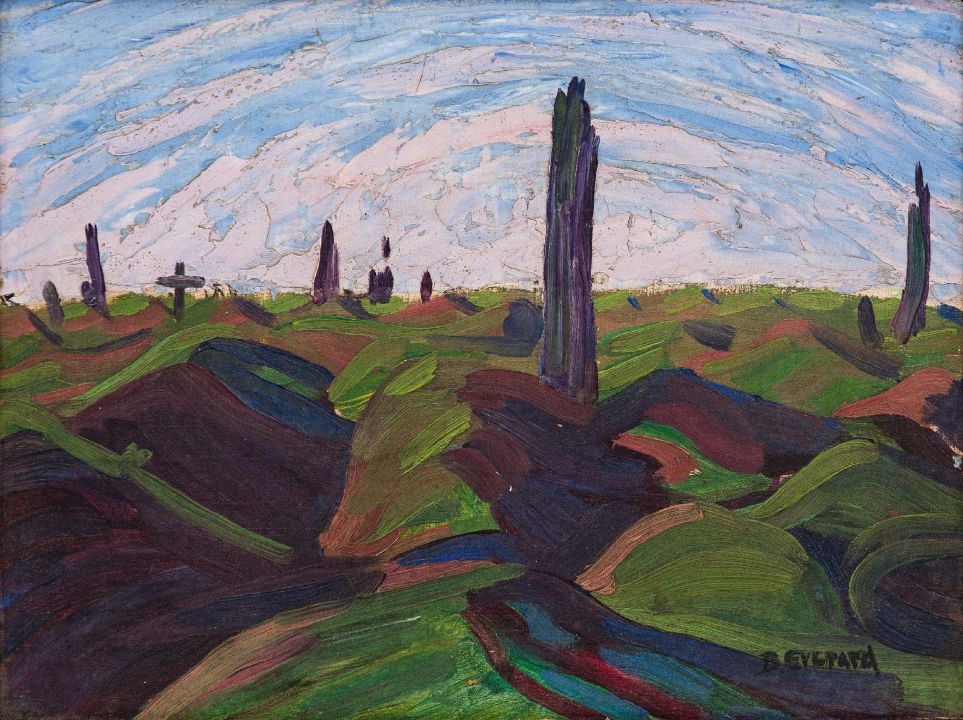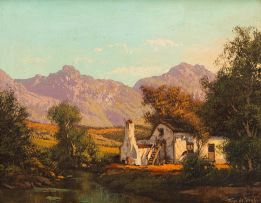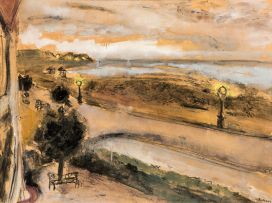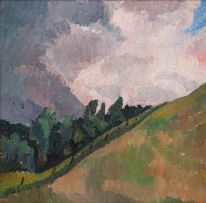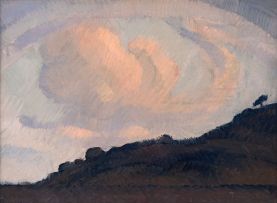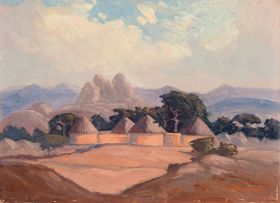Important South African and International Art
Live Auction, 7 November 2016
Evening Sale
Incl. Buyer's Premium & VAT
About this Item
signed; inscribed with the artist's name, title and medium on an Everard Read gallery label adhered to the reverse
Notes
In the July and August of 1916, the 1st South African Infantry Brigade, making its debut on the Western Front, suffered huge losses at Delville Wood. The South African National Memorial there, designed by Sir Herbert Baker, and adorned by Alfred Turner's symbolic bronze sculpture of Castor and Pollux, was completed a decade later in October 1926. Only months prior, in that March, Bertha Everard had visited the site with her sister Edith King and daughter Ruth, and felt utter bewilderment and horror at the still devastated scene and lingering evidence of battle. Although based in the nearby village of Longueval, Bertha returned day after day to paint the landscape, and possibly produced ten pictures that focused on the mindlessness of war made so clear by the wounded earth in front of her, the charred, split or mangled trees, the water-filled craters and the deep, empty trenches.
It is easy to sense the artist's own anguish in the way paint is smeared across the surface of the present lot, whether by brush or palette knife. Deep greens, browns and purples clash violently, while the 'tree ghosts', as Frieda Harmsen has described them in The Women of Bonnefoi: The Story of the Everard Group, 'stand sentinel as far as the eye can see'.1
Bertha's series of Delville Wood pictures, while painted a decade after the events, firmly belong to the great tradition of British World War One paintings by, among others, Paul Nash, Christopher R.W. Nevinson, Muirhead Bone, William Roberts and William Orpen. The links to Nash are particularly evident in the present lot, and while Bertha's style was perhaps more fiercely Fauvist than the Englishman's, the same eerily still, poignant mood that settles over Delville Wood settles also over Nash's Sunrise, Inverness Copse (1917), We Are Making a New World (1918), and The Menin Road (1919).
Two of Bertha's larger paintings of Delville Wood hang in South Africa House, London, and in the Pretoria Art Museum.
1 Frieda Harmsen. (1980) The Women of Bonnefoi: The Story of the Everard Group, Pretoria: J.L van Schaik. Pages 124 and 125.
Literature
Alan Crump. (2006) The Everard Group: Then & Now, Johannesburg: Everard Read. Illustrated in colour on the cover.
